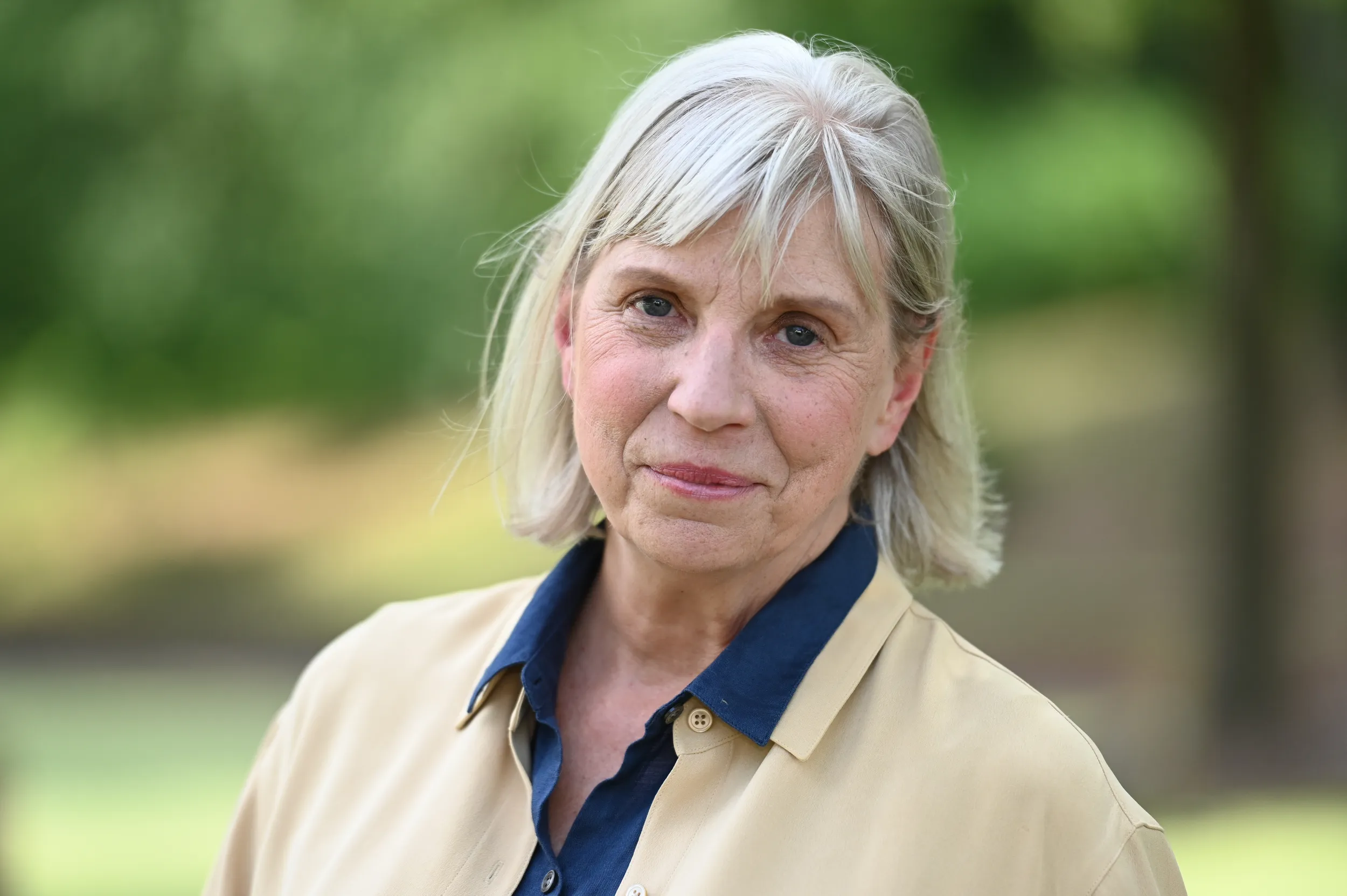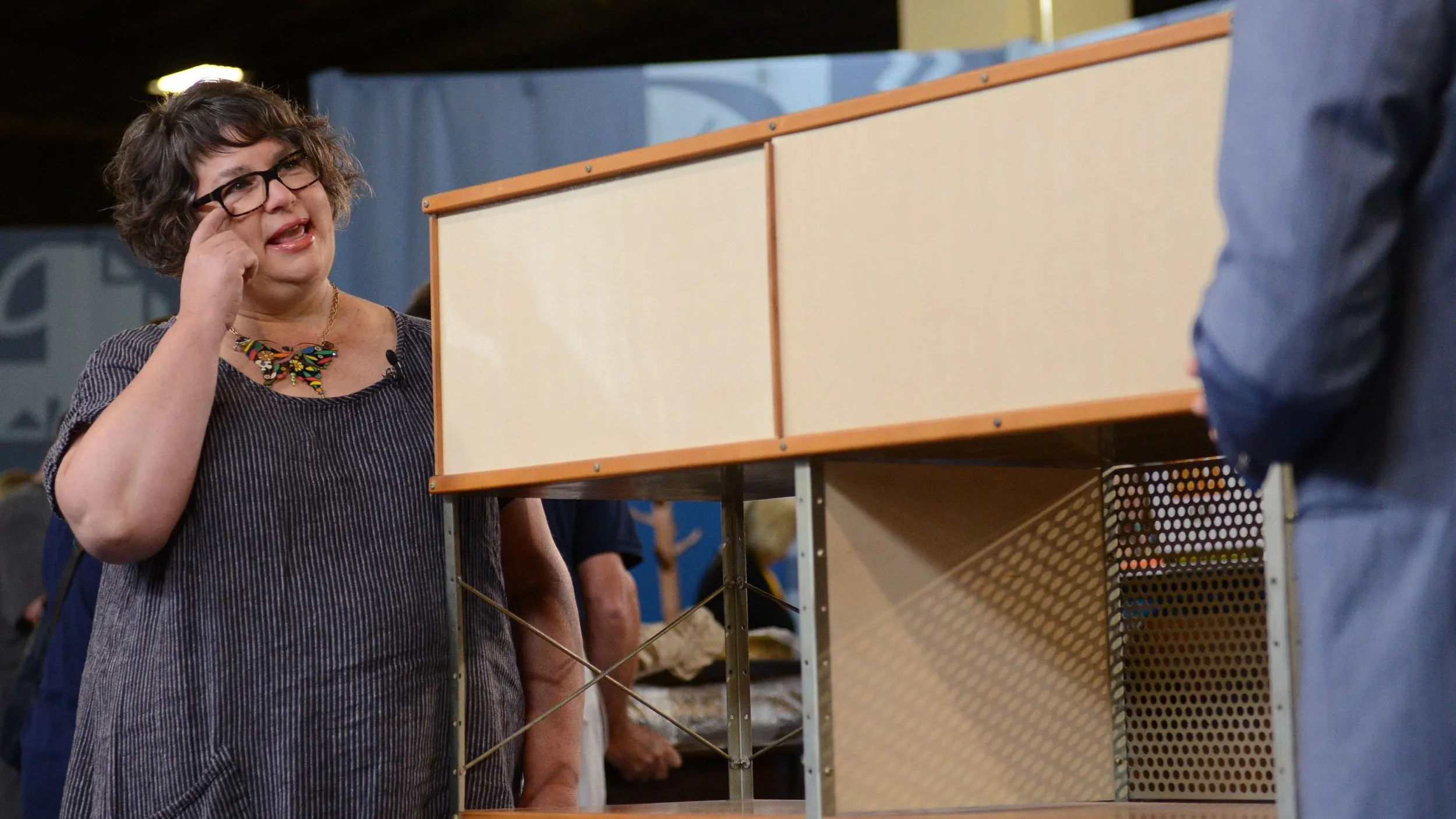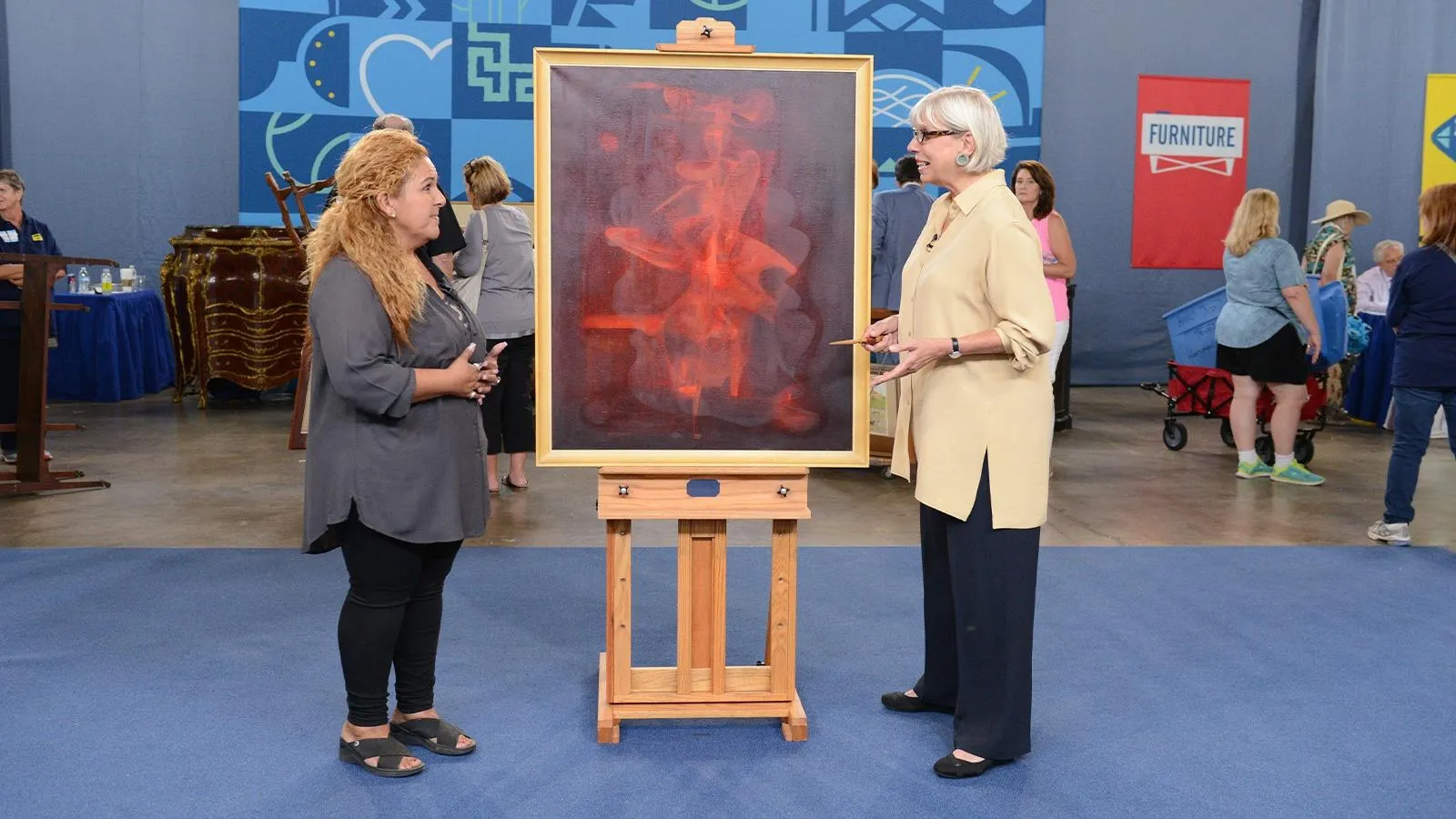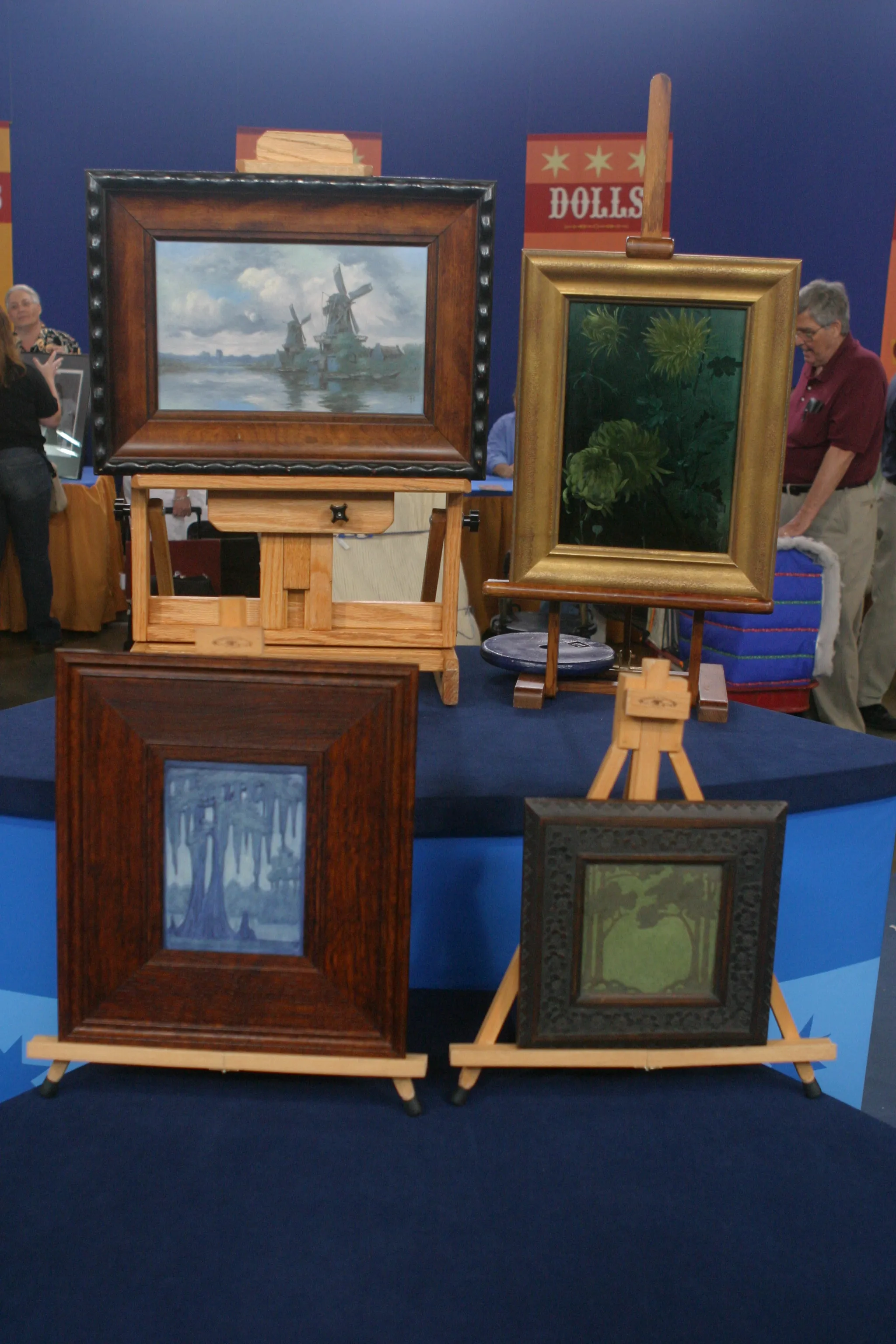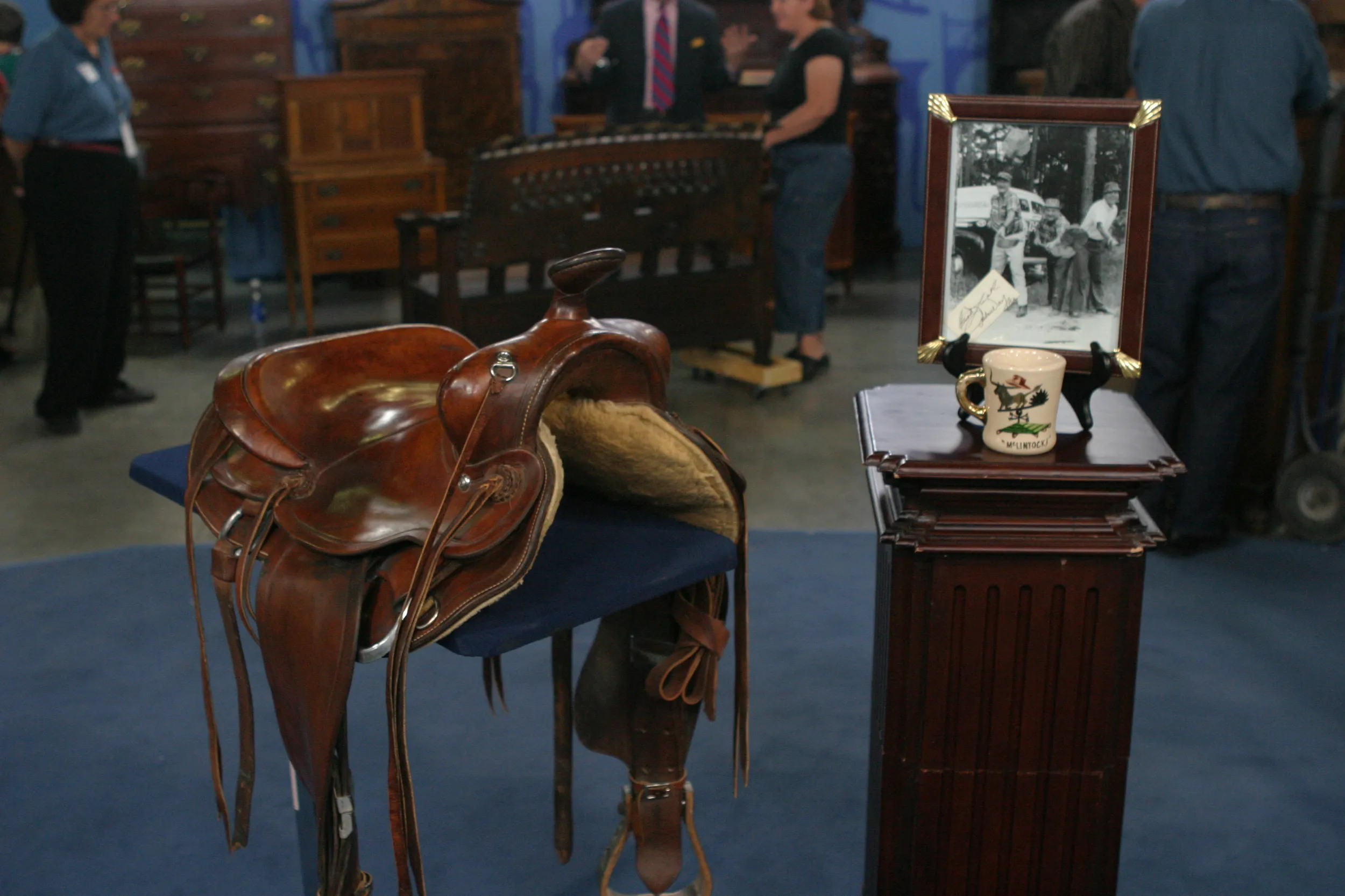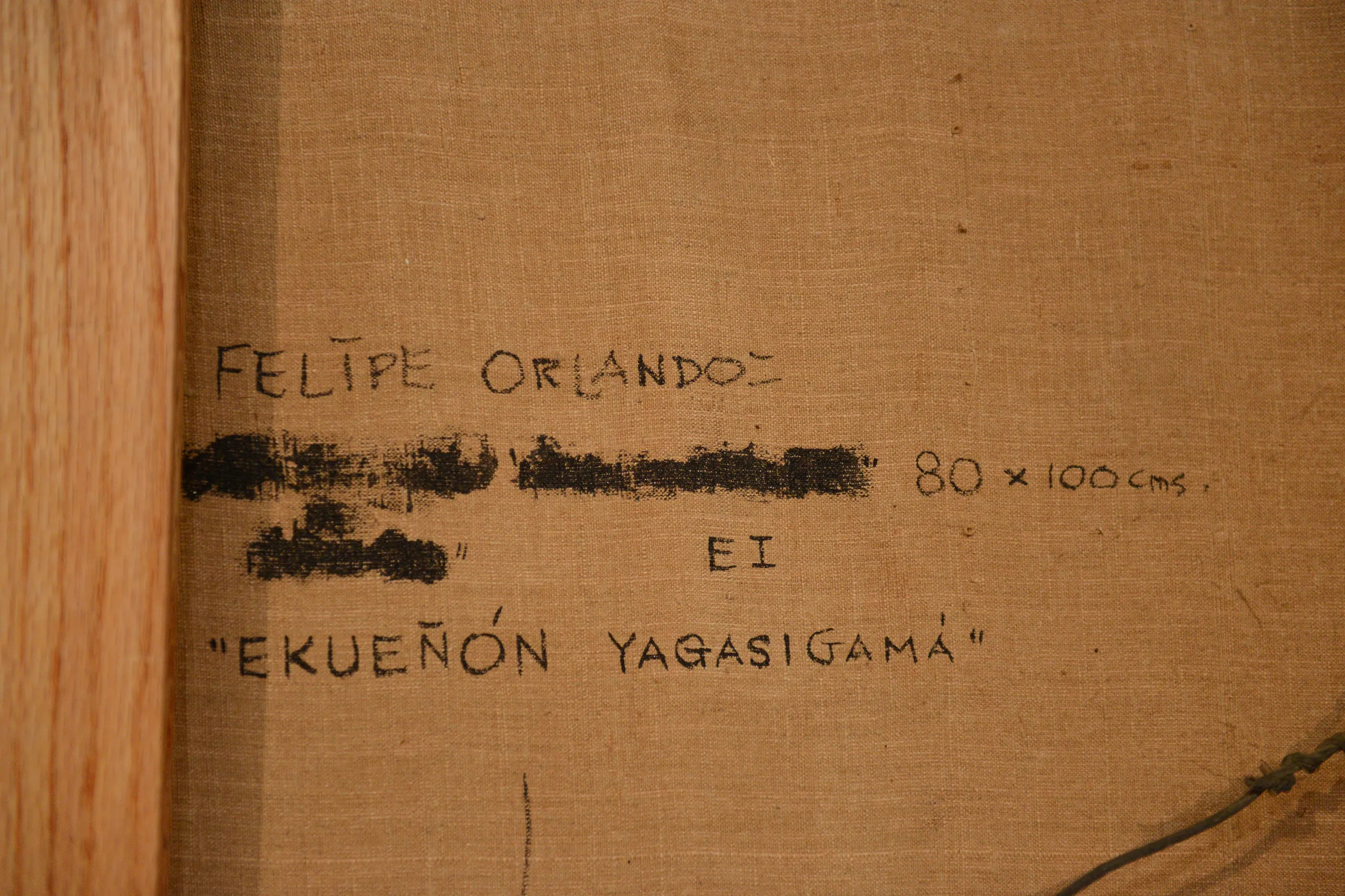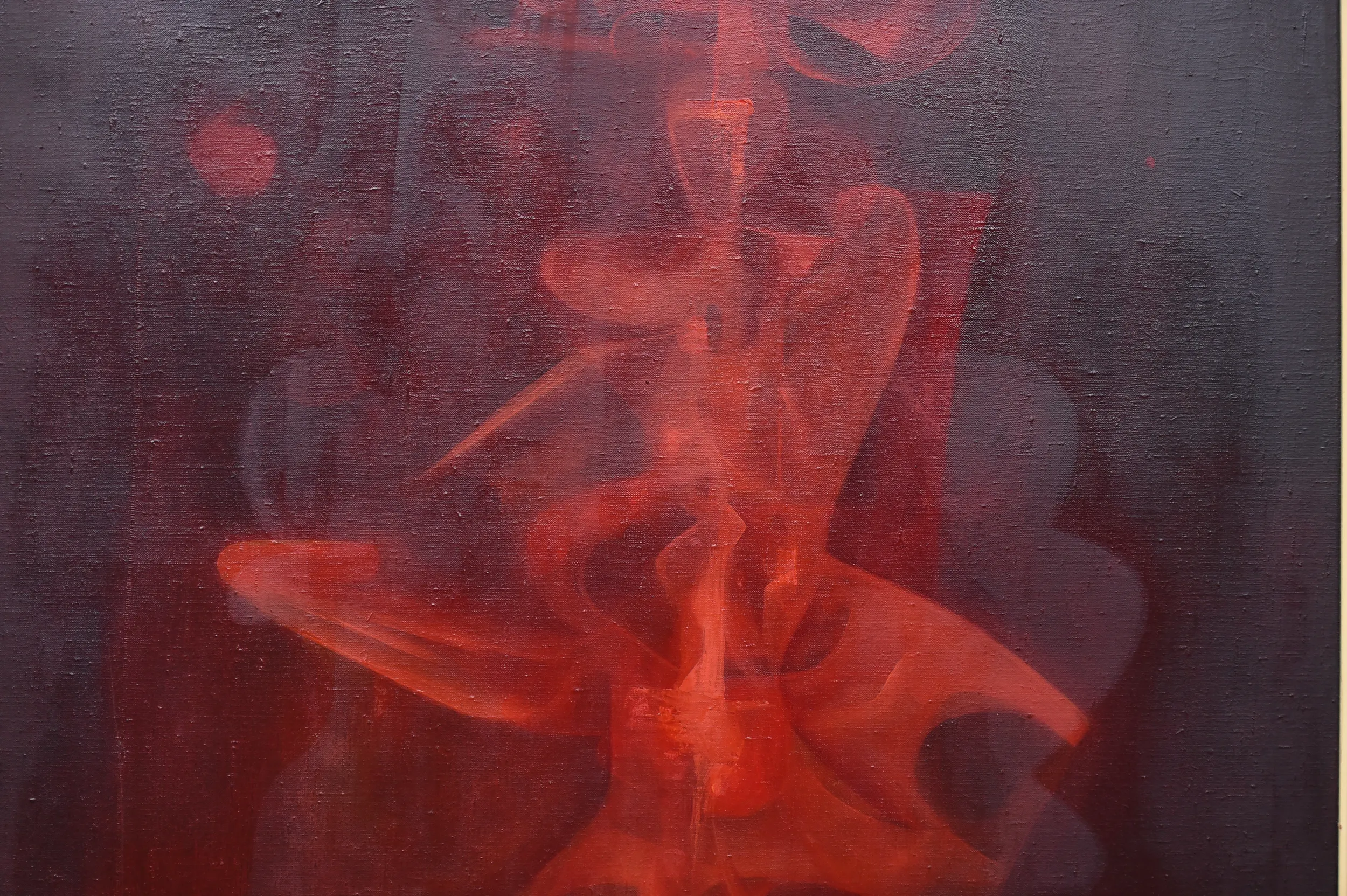GUEST: A friend told me about an estate sale in Dallas, so my son and I decided to go. We went on the last day of the estate sale. When we entered the house, I saw this leaning against the dining room wall on the floor, and I was just drawn into the red color. I'm not an abstract collector, I don't know anything about abstract. I'm very more traditional. Being that I'm Hispanic, I just saw, like, like, a flamenco dancer sort of like the, with the red hues. It just spoke to me in that manner. When I told my son I wanted to buy the piece of art, he said, "Oh, Mom, don't get it, it's ugly." But I decided to go ahead and, and purchase it and ended up paying six dollars for this piece of art.
APPRAISER: Six dollars? So how long ago did you purchase it at the estate sale?
GUEST: About four to five months ago.
APPRAISER: Your son should always listen to you. Sons should always listen to their mothers. (chuckles)
APPRAISER: But this is a really interesting example of an abstract painting by the Cuban artist Felipe Orlando. It's oil on canvas. Orlando was born in 1911 in Mexico, but spent the bulk of his career in Cuba, from 1914 until 1946, which is a very vibrant time to be in Cuba. He was influenced by artists like Tamayo, and also European artist Jean Dubuffet. But when we look at paintings like this, his own instincts for the Afro-Cuban style, as well as his interest in pre-Columbian anthropology comes through. It's quite abstract, but there's a lot of figure studies going on. It's really a wonderful example of his work. The piece is signed and measured on the back, and also, the artist has put an arrow to show which way is down-- the typography corresponds with that direction. In the '50s, the artist moved back to Mexico. And this was probably painted in the 1970s or '80s. His work is in the Museum Nacional in Havana, as well as in the Museum of Modern Art in New York, and at the Museum of Latin American Art in Washington. So, a very established artist. It's in great condition, and at auction, I would estimate it at $4,000 to $6,000.
GUEST: Wow. Wow, not a bad investment. (laughs)
APPRAISER: If it were earlier and painted in Cuba, it would have a different scale of value.
